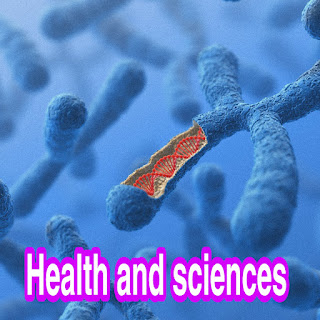DNA: It is the substance responsible for the transmission of genetic traits and it is represented by the total DNA present in the living cell.
Chromosome: It is one of the components of the cell in the nucleus that contains the genetic material DNA and special proteins. Every living thing has a fixed number of chromosomes in its cells.
What is the structure of DNA
The genetic material is composed as a biomaterial of :
1- Phosphate molecule.
2- A pentacarbon sugar molecule is called a deoxyribose ribose.
3- A nitrogen-containing molecule.There are several types of these molecules, such as adenine, thymine, cytosine, and guanine.
What is a gene
It is part of the total genetic material coiled on the chromosomes. A gene consists of a number of nitrogenous bases or nucleotides, as each gene is responsible for one or more of the genetic traits of an individual.
What is inheritance
Transmission of genetic components from parents to offspring of one or more mountains, as offspring have traits from parents or slightly different.
Inheritance is of great importance in preserving the species from extinction, in addition to preserving the genetic characteristics of the species across generations.
Inheritance in humans
Every living organism has its own inheritance method, as reproduction in humans and animals in general differs from inheritance in microorganisms.
In humans, genetic traits are transmitted in the form of half the inheritance from fathers and half from mothers. All of these traits are combined in a host cell called Zygot.
The sperm is formed with half a number of chromosomes(23 ch.) and eggs with half a number of chromosomes(also 23.ch) as well, and when fertilization occurs, the genetic material accumulates cumulatively in the fertilized egg, which is then ready for differentiation and the formation of multiple cells to form the embryo.
The transmission of genetic traits is subject to many genetic foundations such as Mendelian laws and other laws such as sex-specific traits and unrelated traits, as well as linkage, crossing over and other types of transmission of genetic traits.
In humans, there are many laws that govern the transmission of certain genetic traits.
Inheritance in plant
The transmission of genetic traits in plants differs greatly from other organisms. The method of transmission of the genetic characteristics of mitochondria and plastids differs from the chromosomes present in the nucleus of plant cells.
It is possible for a plant to reproduce without the participation of two parents, meaning that the resulting individuals are identical to the original plant.
This has many natural pathways or human intervention and is called asexual reproduction.
On the other hand, the sexual reproduction in plants occurs through the union of half the chromosomal number of male organs and half the number of female parts in hermaphroditic plants.
The product from individuals or offspring has mixed traits if the plants are unisexual as in the palm.
While in full flowering plants, the resulting traits of the offspring are completely identical in their characteristics to the parent plant, being from the same plant(Hermaphroditic plants).
Inhratance in microorganisms
In micro-organisms, inheritance is limited to certain species, so in most cases, asexual reproduction is dominant.
The genetic material in the microorganism is duplicated before fission occurs in the cytoplasm, followed by binary fission.
Each new cell receives the same genetic material from the parent cell.
Factors affecting inheritance and genetic material
There are many factors that affect heredity and genetic material. In many cases, offspring can be born with genetic problems or defects.
Genetic mutations are the most common and most commonly affect individuals with it. It is possible that the genetic traits are passed on to the offspring, and part of the genetic material is defective or defective. These mutations can be lifelong with individuals, causing an inherent disability to live.
Types of genetic mutations in human
1- chromosomal mutation: In this type, the mutation occurs at the chromosome level, causing a decrease or an increase in the number of chromosomes, as in Down syndrome.
2- structural mutation: In this type, the mutation occurs at the level of the genetic material DNA.

Comments
Post a Comment